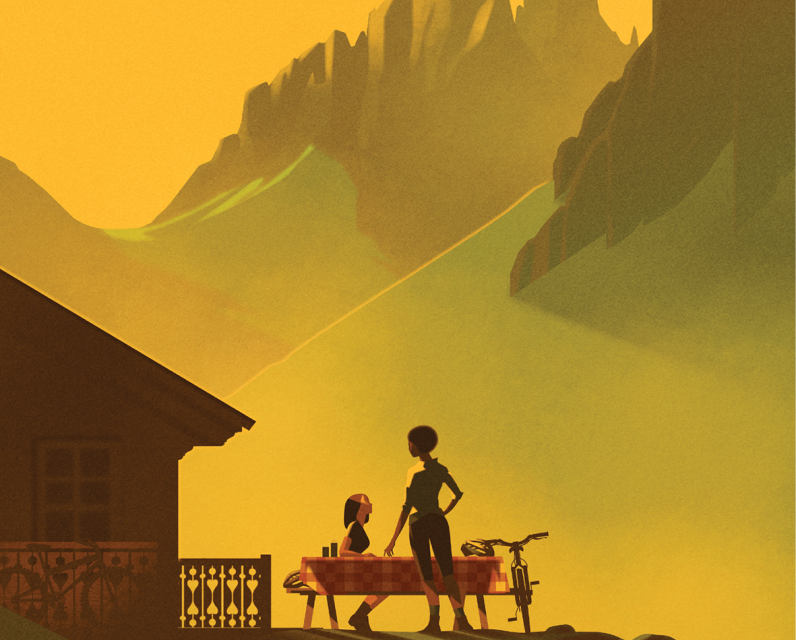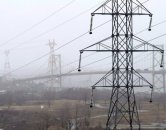Source Feed: Walrus
Author: The Walrus Lab
Publication Date: July 11, 2025 - 10:19
Part 9: Why Do We Travel? To Heal
July 11, 2025

console.log("asd");
const foo = document.getElementsByClassName('th-hero-container')[0];
foo.insertAdjacentHTML('afterbegin',`
IN PARTNERSHIP with Toronto Pearson / Canadian Airports Council
`);
.gallery {/*margin-bottom: 0; top: -40px; position: relative;*/}
div.gallery span.hm-tagged {/* margin: 0; */}
@import url('https://fonts.googleapis.com/css2?family=DM+Serif+Text&family=Roboto:ital,wght@0,100;0,300;0,400;0,500;0,700;0,900;1,100;1,300;1,400;1,500;1,700;1,900&display=swap');
.gallery {/*margin-bottom: 0; top: -40px; position: relative;*/}
div.gallery span.hm-tagged {/* margin: 0; */}
Y WE TRAVEL
Why do we travel? For too long, we took this question for granted. Travel can make our large world small, and we forgot what a gift this is until it all got taken away from us not too long ago. Today, we’re returning to the skies in record numbers, but with a more appreciative mindset. It’s a perfect moment to take stock. The contributors to the “Y WE TRAVEL” series are accomplished writers from all walks of life. Over the length of this series, they will explore the diversity of purpose in our journeys—not just where or how, but why. On behalf of Toronto Pearson Airport and the Canadian Airports Council, please enjoy.
In the summer of 2017, I found myself on a bicycle hurtling down a mountainous track in the Italian Alps, oblivious to any physical dangers that lay ahead—or the emotional turbulence that defined my life then.
My friend Betsy and I were north of Cortina d’Ampezzo, Italy, known for its stupendously steep terrain. To get to this trail, we pedalled some kilometres along a verdant bike path and then hitched our bikes to a gondola and climbed in: trails with mechanical assists!
The gondola took us to a tiny village nestled in a high vale. Singing filled the air from the open doors of a stone chapel. Geraniums and pansies overflowed the window boxes lining the sunny street. When the church bells started ringing, the choir voices abruptly paused for a few moments, then resumed.
We looked at each other, laughed, and mounted our bikes for the long descent. As we picked up speed, the meadow gave way to tall pines. Soft, fragrant wind blew into my helmet. Betsy was going fast, but I was determined to keep up. I noticed, with some surprise, that my facial muscles had shifted into an arrangement I hadn’t felt in a long time: a huge grin.
Just a few months earlier, I was curled up in a ball, crying on my living room floor. My husband of twenty-five years had walked out the back door with a small blue suitcase, never to return. I’d been with him since I was eighteen. I was terrified, grief-stricken, and existentially shaken. I cried every day. I ruminated ceaselessly on matters large and small: Who was I without him? What did the future hold? How would I fix the lawn mower?
But here I was, exhilarated, delighted, propelling my own metal steed into what appeared, at least for the moment, to be a life worth living.
When we have the opportunity to interpret the world anew, anything becomes possible.
Before long, we came to a bright clearing overlooking snow-capped peaks. A small log structure had picnic tables neatly laid out with checkered cloth placemats and ceramic beer steins. If my divorce had left me feeling like an outcast waif in a dark fairy tale, perhaps this was the plot point where I would arrive at a magical elfin bower. A waitress in lederhosen showed us to our table. We ordered lingonberry kaiserschmarrn (fluffy, shredded pancakes), potatoes and speck, and two Huber Bräu. What century was it? A sign on the wooden building dated the place to 1793: a hand-built restaurant in the middle of the wilderness!
Fully sated, we ambled back to our bikes. I read the bold black lettering on the frame: MOODBREAKER. Exactly. I had been in Italy just four days, and I already felt like my heart was remembering that joy and hope were not just possible but right in front of me. How is it that travel can plant us not just in new territory but in new states of mind, away from pain and into healing? As the thirteenth-century poet Rumi put it simply, “Travel brings power and love back into your life.”
Where We Travel
“My travel patterns have changed since my children became adults. My husband and I have replaced extended family vacations with shorter, more frequent trips to destinations we can reach on direct flights from Halifax Stanfield (YHZ). It’s fun to travel like this. We plan less and have more time to contemplate our experiences. I often find myself comparing them to home. Last summer, for instance, we flew to Iceland and Bermuda. We walked the black sand beach at Vik, Iceland, just a few weeks before strolling the pink sands of Elbow Beach, Bermuda. These are iconic sights, not unlike the beaches near Halifax, which is probably why the experience felt strangely familiar. I felt the same way about eating seafood. You’ve never had cod until you’ve had Icelandic cod, I thought, and then it occurred to me that a visitor might say the same about Nova Scotia lobster. A few months later, arriving at the lakeside Sensea Nordic Spa in Chester, Nova Scotia, I was reminded of the Hvammsvik geothermal steam baths on the Whale Fjord near Reykjavik. My point isn’t that Iceland and Bermuda are just like Nova Scotia because they’re not. In fact, I’m struck by how different they feel, considering that such short flights separate them. These little differences in geography, food, and culture are why we travel and why others travel here. I try to keep that in mind.”
– Joyce CarterPresident & CEO, Halifax International Airport Authority
Philosopher Jean-Jacques Rousseau, a young, impoverished man with a difficult childhood, regretted not keeping a diary during his travels. “There is something in walking which animates and enlivens my ideas. . . The sight of the country, a succession of pleasant views, the open air, a good appetite, the sound health which walking gives me. . . all this sets my soul free, gives me greater boldness of thought. . . without fear or restraint.”
Poets and philosophers have much to say on the matter, but so do neuroscientists. They talk about how well-being is closely linked to novelty. Experiments show that when lab animals are placed into new, non-threatening environments, the reward system in their brains activates. The hippocampus releases dopamine into the bloodstream, a cascade of chemicals that facilitates learning and memory. Other studies show that exposure to new environments can reduce stress, anxiety, and depression.
We have brains that love to learn and that are wired to pay attention when confronted with something new. The trifecta of underlying novelty—surprise, curiosity, and interest—steers us away from negative emotions and challenges us to make sense of new stimuli.
When we have the opportunity to interpret the world anew, anything becomes possible. Experiencing awe and beauty enables us to feel less lonely and more connected to the world around us. We gain perspective on the relative insignificance of our own problems. In these moments, if we’re lucky, we are able to tell ourselves a new story of who we are. At the time, I was learning that I could pedal my own bicycle into a different future, that I had agency, capabilities, and renewed confidence to confront the things I feared. And sometimes, there’s just pure pleasure: the bluebird sky, the gentle breeze.
Upon returning to the picturesque town of Corvara, we rested and later went out for dinner. I still had much to sort out in my life, and I wasn’t cured of grief. But it’s hard to be sad when someone serves you mushroom ravioli on a plate of bright, edible flowers.
We then travelled to Bolzano, where we viewed the mummified remains of the Neolithic iceman, Ötzi. He looked pretty good, given what he’d been through. In the lobby, a life-sized artist’s rendition showed him with muscles, sheepskin skivvies, and a full head of hair. We took pictures, pretending he was my new boyfriend. Over 5,000 years old, suffering from arteriosclerosis, parasites, and a fatal arrow wound, he might have been challenging to bring home for dinner. Still, he was a reminder that humans are all connected through time and space, across cultures and nations, in fragility and strength.
We all suffer heartbreak. Life goes on. One step, or pedal stroke, at a time.
Florence Williams is the author of Heartbreak: A Personal and Scientific Journey (2022) and The Nature Fix: How Being in Nature Makes Us Happier, Healthier, and More Creative (2017).
Explore the rest of the Y WE TRAVEL series.
Part 1: We travel to meet the neighbours
Part 2: We travel to experience awe
Part 3: We travel to relive our past lives
Part 4: We travel to make family memories
Part 5: We travel to taste the unknown
Part 6: We travel because nature is everywhere
Part 7: We travel to drink in the beauty
Part 8: We travel for the challenge
The post Part 9: Why Do We Travel? To Heal first appeared on The Walrus.
OTTAWA — Canada’s largest public sector union is warning that any cuts to federal employees, as the Liberal government looks to shrink spending, will mean slower, lower-quality services for people seeking passports, employment insurance and veterans benefits.
Sharon DeSousa, national president of the Public Service Alliance of Canada (PSAC), said Prime Minister Mark Carney should stick with his campaign promise to “cap” the federal public service — not cut it.
However, Carney’s senior-most minister this week...
July 11, 2025 - 15:52 | Catherine Lévesque | National Post
Alberta and Ottawa have signed off on $203-million for new affordable housing projects across the province.Provincial Social Services Minister Jason Nixon says the joint funding will go toward 25 projects and see more than 2,300 units built.
July 11, 2025 - 15:51 | | The Globe and Mail
The funds will go toward improvements to the electricity grid, carbon capture technologies and the expansion of wind and solar power projects.
July 11, 2025 - 15:50 | Globalnews Digital | Global News - Canada



Comments
Be the first to comment